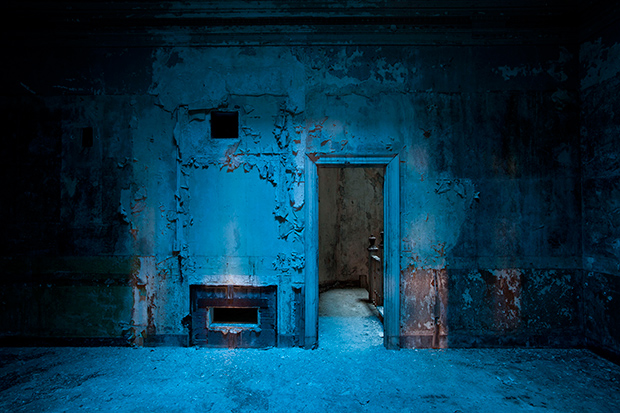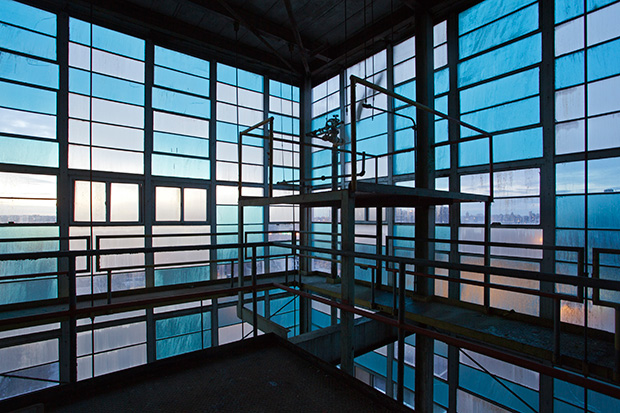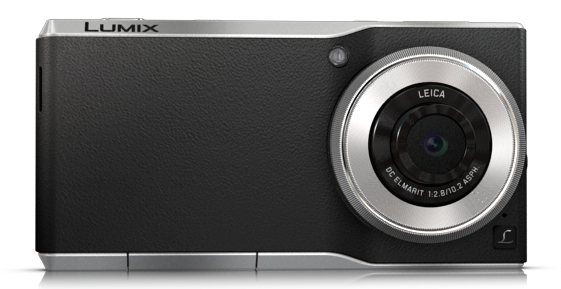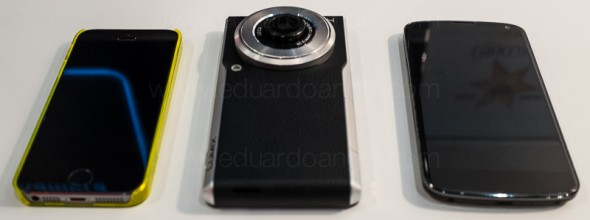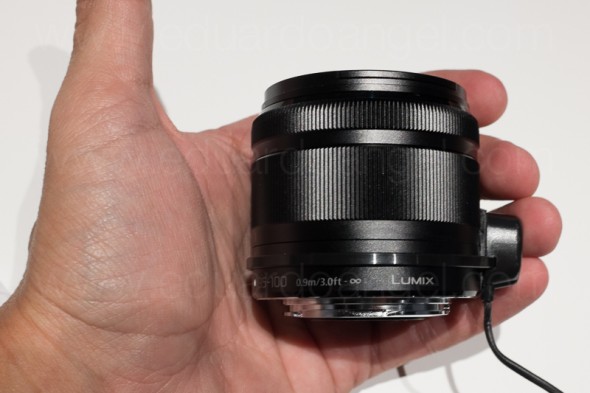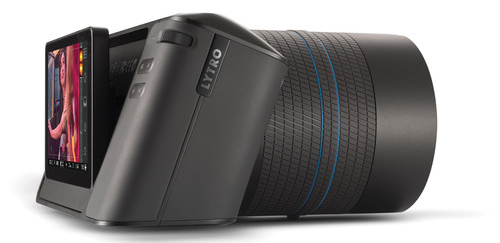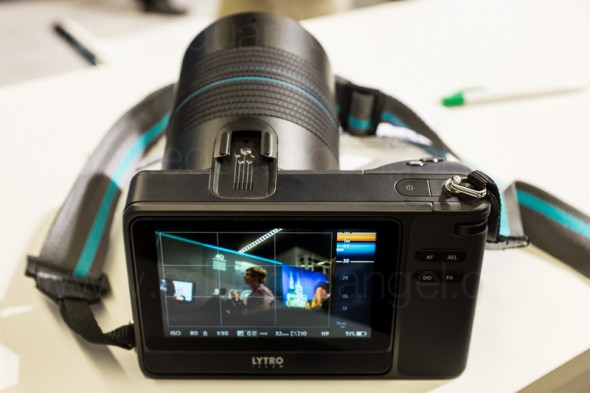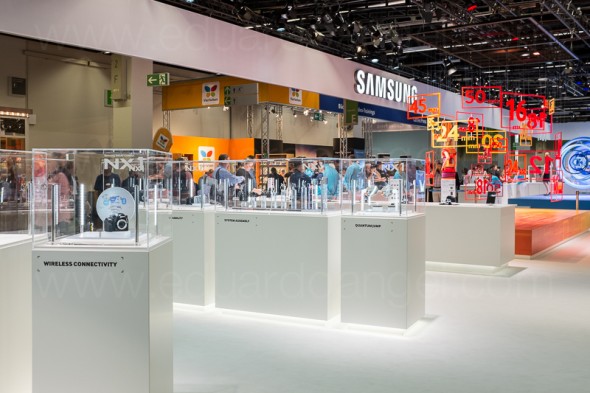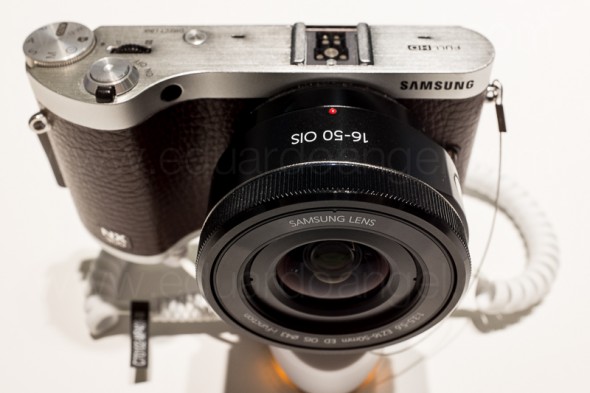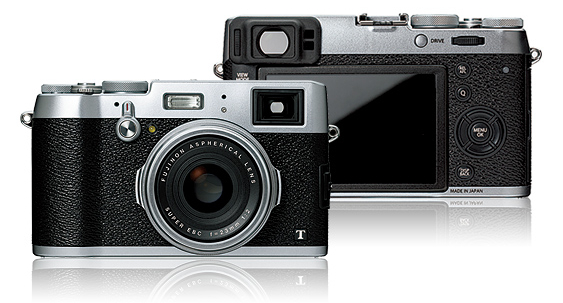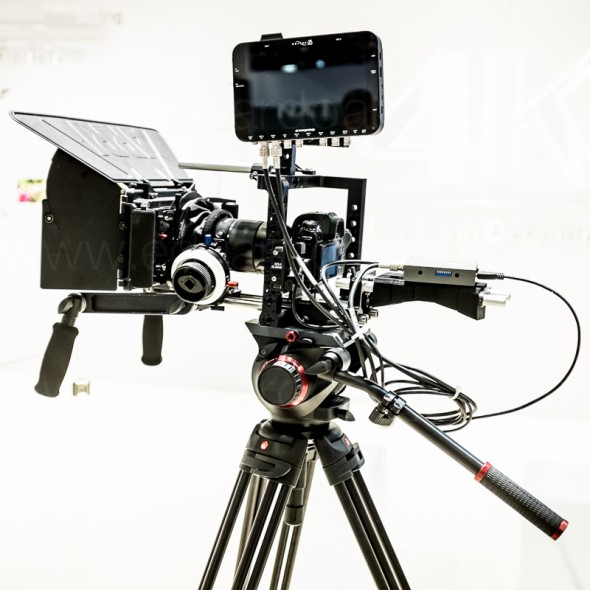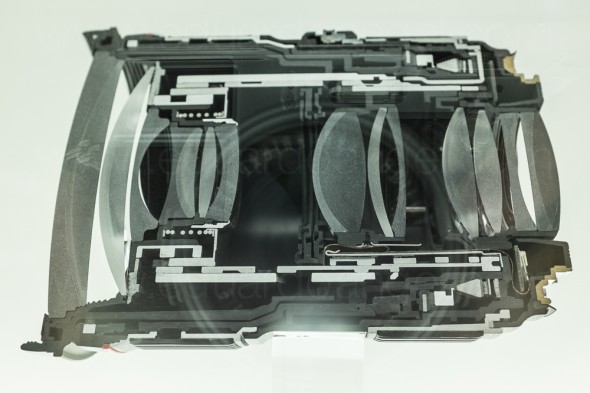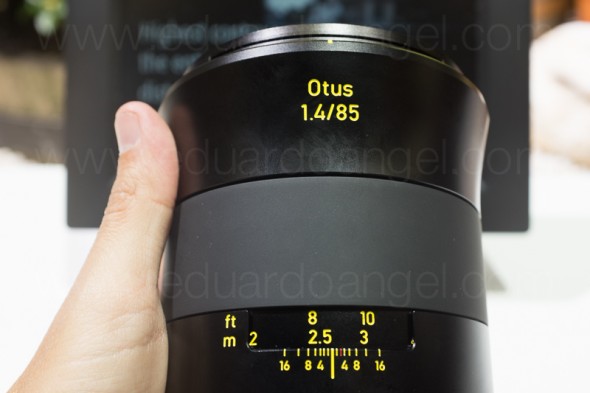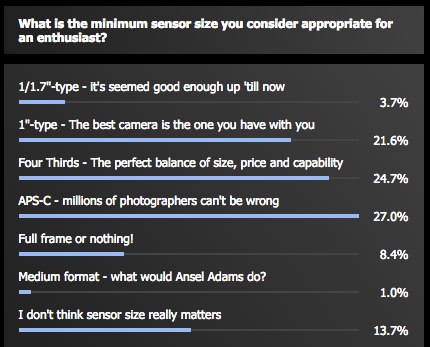News

My Top Ten Favorite Articles of Last Week.
These are my top ten favorite articles of last week, in no particular order. If you have something worth sharing next week, please send it my way by email or Twitter.
The Moving Image Genre-form Guide http://1.usa.gov/1q3nrSJ via Library of Congress
Ever-Changing Technology Challenges Filmmakers http://n.pr/1vNae78 via NPR
Portraits of 10 US Presidents Before and After Their Time in Office http://bit.ly/1vNamn1 via Petapixel
Street View uses ‘camel cam’ for desert trip http://bit.ly/1qo2L96 via Digital Trends
This one is not photography or video related, but it is one of the coolest links I’ve seen in a long time: Your life on earth http://bbc.in/1wsOhdL via BBC – Earth
Modern American Ruins Photographed by Rob Dobi http://bit.ly/1wsOKNh via Feature Shoot
Inside The Design Of Norway’s Beautiful New Banknotes http://bit.ly/1wsOMob via Co.Design
Breaking The Cinematic Fourth Wall
Top 10 slow-mo movie moments http://bit.ly/1sIOh9C via YouTube
Future Storytelling: Projects http://bit.ly/1tDo1P8 via HKW
Video

Photokina, after the dust has finally settled.
It feels like six months but it’s been only a month since we had the great privilege to once again attend the largest and arguably most important trade show in the photo industry: Photokina.
One month on and the dust has settled, sample photos and videos are popping everywhere, most specs are now confirmed, and rumor websites have moved on to tell new tall tales.
This time I found the show less crowded and less exciting than previous years. Perhaps it’s because most manufactures now announce products before, not during, trade shows, and the expectation and surprise factor is quickly ebbing away. But there are always interesting surprises, especially in the “Chinese” hall, and it is also nice to be able to touch the toys everybody is drooling over.
The following is my very personal, unscientific, but also unbiased list of products that got my attention, in no specific order.
• Canon offered a mind-blowing low light test. If I remember correctly, they called it “See in the dark.” They used an EOS C300 and a 7D Mark II to shoot some props in a darkroom. There were only a few tiny light bulbs covering the scene. When I entered the room I couldn’t even see the cameras, but somehow the cameras saw the props and were able to get a decent exposure. I believe the 7D Mark II was set at 12,500 ISO and the image on the camera’s monitor looked usable but not amazing. The C300 was set at something like 25,000 ISO and the image on an external monitor looked decent. Other than that, nothing else was remarkable at the Canon booth.
The Canon 7D Mark II is currently available for pre-order from Amazon and B&H.
• Panasonic consistently surprises me. The CM1 is something I have NEVER seen before, and I’m very surprised with the lack of coverage this amazing piece of technology has received.
Take a Nexus 5, iPhone 6, or Lumia 1320, stick a tiny and beautiful Leica 28mm F2.8 Elmarit DC lens coupled with a 20MP MOS sensor, a crazy fast Qualcomm MSM8974AB 2.3GHz Quad-Core running on Android 4.4 (Kit Kat), then add a super user-friendly interface with all kinds of clever and customizable options including Manual Exposure setting, 1920 x 1080 video, and just for fun throw in Wi-Fi, Bluetooth, NFC, and GPS. Did I mention that this CELL PHONE also captures 4K video? I’m still processing that too! Simply mind blowing. Forget the iPhone 6 or Nexus 6. The CM1 will be my next camera/phone.
Complete specs for the Panasonic CM1 are available here.
Panasonic’s ultra-compact Lumix 35-100mm f/4 lens, equivalent to a 70-200mm on a full frame camera, is incredibly small and lightweight (0.48 pounds), and it’s about 75% the size of the already tiny (and excellent) Panasonic Lumix 12-35mm f/2.8 ASPH X lens (68.0 x 74.0 x 1.0 inches and 0.7 pounds). Regardless of its size, it comes with O.I.S. (Optical Image Stabilization) and it is fully compatible with high-speed AF cameras up to 240 fps. That should do it…
The Panasonic ultra-compact Lumix 35-100mm f/4 lens is currently available for pre-order from Amazon and B&H.
• Light field photography has been on my radar for a while and we finally had a chance to play with a Lytro camera. The ability to focus images after they have been captured, change the perspective, increase the sharpness, and create 3D images or presentations are some of the many potential developments. I had a chance to play with Lytro’s Illum camera, and while I find the technology amazing, the software still needs some serious work. Here are the camera’s specs.
The Lytro’s Illum is currently available now from Amazon and B&H.
• I simply don’t get it. Samsung released several interesting products and the booth was almost empty. And, that’s the GOOD news. The company reported earlier this month a 60% drop in operating profit for Q3 2014.
I asked a Samsung staff member what the unique features were on the brand new NX1. He replied that it has a 28MP APS-C CMOS sensor, it can record 4K and UHD video using H.265 codec, it offers a weather-resistant magnesium alloy body… I interrupted and asked him this: if I’m debating over a Nikon D7100, a Canon EOS 7D Mark II, a Panasonic GH4 or a Fujifilm X-T1, why should I consider the NX1? Picture a deer caught in the headlights. His answer was, “I guess I wouldn’t consider the NX1.”
Wow! And that’s exactly how I feel about Samsung’s flagship camera. Nice, decent specs, but unremarkable overall. An additional potential issue is Samsung’s relatively new NX mount, so you can use Samsung’s proprietary lenses, or other brands’ with an adapter, which requires an additional investment.
Some other quick notes I took while playing with the NX1: The 3″ tilting Super AMOLED touchscreen display works well. Very fast shutter, nice colors, the 85mm f/1.4 is very sharp, pretty standard menus, kinda slow AF tracking, interesting built-in color corrections and presets. The lenses come with “i-function” which allows you to control them from the touchscreen.
In case you are curious, the Samsung NX1 is currently available for pre-order from Amazon and B&H.
• We saw some of the coolest developments at Fujifilm, but for some reason not even Fuji’s staff knew about them. There are two new services: Magic Video Print and Magic Video Print Share, which according to the company will be available in the “1st half of 2015”. Not to be confused with Fuji’s Instax Printer (also available here), which is basically a portable printer that allows users to print smartphone photos on the go.
Magic Video Print is basically a software that extracts 10 still images per second from videos, analyzes faces, focus, brightness, and other characteristics, and then recommends approximately 20 images from the video to be printed. That’s cool.
But, what is REALLY cool is Magic Video Print Share. Using Augmented Reality voodoo, the technology allows users to share prints extracted from video footage. Using a smartphone or tablet (and soon, I imagine, a smart watch) to “scan” the printed image, the original video with sound is replayed automatically on the scanning device. Are you finding it hard to imagine all of this? I don’t blame you. I saw it and couldn’t believe it.
Here’s a quick cellphone video:
Now, the potential for this is huge. Proud grandparents framing their favorite images and watching the kids play? Wedding images that contain laughs and special songs? Awesome!
Oh yeah, and Fuji also announced the new X100T (here are the specs), but I LOVE my X100S so much (full hands-on review) that I simply don’t care.
In case you do, the Fuji X100T is currently available for pre-order from Amazon and B&H.
A few more cool things we saw during the show:
Some Post-Photokina thoughts
Every year and every trade show comes with a set of buzzwords and catch phrases. Sometimes it seems that manufactures have a pre-show meeting and agree to only talk about two or three topics. Remember 3D? You get my drift. The flavors of the year have been 4K, WiFi, GPS, Curved Sensor, and even CGI.
Image capturing and recording devices, be it stills or motion, have become much more multifunctional. Photographers can now handle many tasks with a single device. Because of this, over the years I’ve been happy to see (at WPPI, NAB, Photokina, and most likely at the upcoming PhotoPlus) that the focus has shifted (slightly) from the megapixels war to perhaps more important topics like image editing, archiving, presentation, and file sharing.
For the longest time, the 24 x 36 has been considered the “gold standard” for sensor formats, but in the past couple of years, the clear improvements on Micro Four Thirds systems have blurred the lines between professional and non-professional camera equipment. Is the $500 GoPro Hero4 capable of 12MP stills, and 4K 30 fps, 2.7K 50 fps, 1080p 120 fps video LESS professional than a three-year old DSLR? Good example: even the Medium Format systems are shrinking with the Pentax 645z.
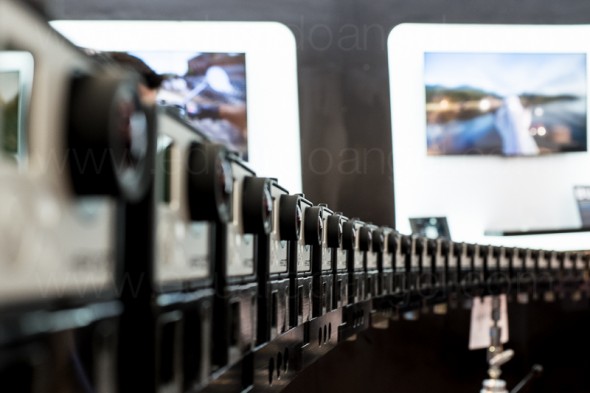
Take a look at this recent poll on DPReview:
So, what’s coming next? Nobody can predict the future, but the current trends seem to give us some clues on what to expect:
• Newer systems are becoming smaller and extremely powerful, with the incredible Novo camera, Panasonic’s GH4 and Sony’s a7R.
• Cheaper and more efficient processors, faster transfer rates and huge but increasingly cheaper storage devices will enable higher quality videos in 4K or higher resolution. Ultra fast frame rates, continuous-tracking, internal RAW processing and perspective correction, Wi-Fi, Bluetooth, NFC, and GPS will become standard features.
• Cameras and photo and video hardware will be easier to operate, will require less people to do so, and they will be controlled wirelessly via tablets and smartphones. Redrock Micro’s One Man Crew, the heavy but amazing DJI’s Ronin and Syrp’s Genie are just but a few quick examples. With the complete separation of camera support and camera operation, the camera can transition to and from cranes, hand-held, or flying drones with no significant effort from the comfortably seated operator.
• Lenses will continue to improve, not only in resolution and speed, but also with much better internal optical image stabilization for action shooters and filmmakers. Good examples of lenses that are setting the path are Sigma’s 18-35mm f/1.8 DC HSM and Sigma’s 120-300mm F2.8 DG OS HSM, two of the most amazing lenses I’ve ever used.
• For monitors, I expect to see higher resolutions, better contrasts and expanded gamuts, but also the possibility to use smaller screens as color-accurate external monitors and viewfinders while also controlling the capturing device.
• We have talked about pulling stills from video for a while, and RED shooters have been able to do this for a while, but the tools to do it quickly while keeping as much data as possible are still lacking. This is about to change; Panasonic’s “4K Photo” system allows users to pull images (16:9, 4:3, 3:2 and even 1:1) with complete EXIF data from 4K footage captured on a number of devices, including the Panasonic GH4, the super compact FZ1000, the high-end HC-X1000, the tiny LX100 and even the CM1 camera phone!
Fuji’s Magic Video Print Share is a huge leap forward and I expect other manufacturers (hear that Adobe?) to quickly jump in the ring.
Video

DP Review issues Panasonic Lumix DMC-GH4 Final Review.
DP Review releases final conclusions on the Panasonic GH4. I agree 100% with them.
- The DMC-GH4 sets a new bar in terms of the video capability available in a camera that a significant number of people can afford.
- In a professional setting the GH4 is unusual in being compatible with an interface unit (the DMW-YAGH aka “The Brick”) that adds industry-standard 3G-SDI and XLR connectors.
- The GH4’s image quality is very solid, producing nice JPEG images and usefully flexible Raw files. The color and tonality of its images seem improved over previous generations of camera. In video mode the camera is equally solid.
- Despite the increased competition, the GH4 remains the king of accessible stills/movie hybrids.
- A remarkably capable all-in-one package that lets you capture good quality footage and excellent stills from a sensibly-sized standalone camera.
- The GH4’s video quality and well implemented touchscreen control system give it the edge over less expensive cameras, such as the a6000, while its price and ability to capture 4K internally will give it broader appeal than the Sony a7S.
- What makes the GH4 so strong is its balance of capability, size and price. Its ability to slot into a professional setup, via the optional interface unit can only help expand this appeal.
- Low light performance is solid if not exceptional – so you’ll need to think about lighting and bright lenses for low light shooting – but in many situations the GH4 produces good footage with a little subject/background distinction.
- If you’re only interested in stills then it’s not quite such a compelling proposition – the competition is fierce at this price point. However, if you have any inclination towards moving images, there’s not a camera that offers nearly as much capability and support as the GH4 does, for anywhere near the price.
The complete review is available here.
I hope you’ll take a moment to check out these additional links:
- 7 things we discovered after shooting 4K with the GH4. You won’t like #4.
- I Just Got a Panasonic GH4 – Now What? Hard Drives.
- I Just Got a Panasonic GH4 – Now What? Batteries.
- I Just Got a Panasonic GH4 – Now What? Memory Cards.
- Discussing the Panasonic GH4 Live!
- Panasonic GH4 Firmware Update.
And here are some samples clips:
Everything in Slow Motion was shot at FHD 96 fps. Everything else was shot at 4K (3840×2160). We used the Cine-D Profile. The only “grading” done was the B&W preset on Adobe Premiere Pro CC.
Disclaimer:
I’m extremely proud of the 100% free content we provide and I hope you enjoy it as well. Thank you all for your support, encouragement and constructive criticisms – I appreciate each and every one of them.
I only promote products, services, and companies that I use and trust, and that in my opinion deliver great value to our industry. If you are purchasing something, please consider using my affiliate links to help support this site. Thank you in advance.
Video
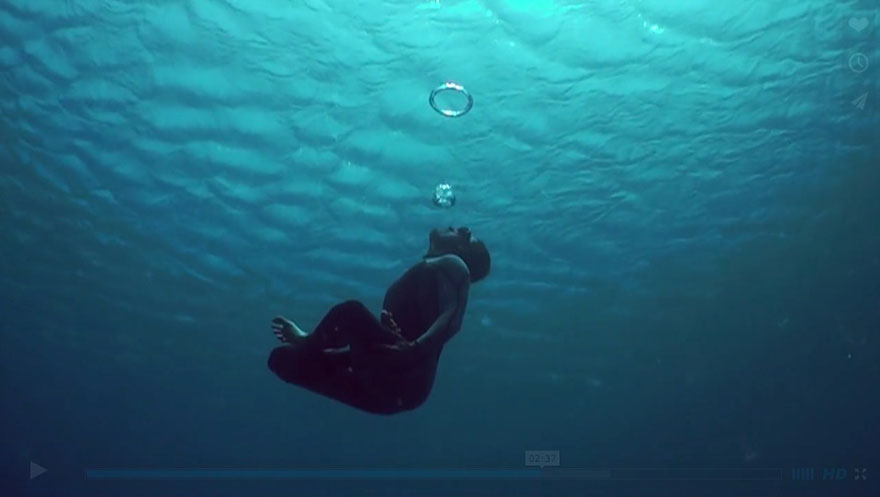
My Top Ten Favorite Articles of Last Week.
These are my top ten favorite articles of last week, in no particular order. If you have something worth sharing next week, please send it my way by email or Twitter.
Amazon made the hottest photography and video products announced at Photokina available for preorder! http://amzn.to/1rJwNZp
Case Study: Lighting for Commercials http://bit.ly/1rJwfCL via NoFilmSchool
Dissecting the opening titles for “Manhattan” (2014) http://bit.ly/1rJvUjq via Art of the Title
Amazing Freedive with The Ocean Brothers on Vimeo http://bit.ly/1rJvEAN
NHK demonstrates their 8K 120Hz production system. http://bit.ly/1rJzM3W
BBC Tests Shooting at 600fps in 4K http://bit.ly/1rJzB8N via Creative Planet
Unprecedented access into a fundamentalist Hindu training camp in modern India (watch below) via PBS.
Beautiful images of Airports from above http://bit.ly/1vfZQSP via Fast Company
Video
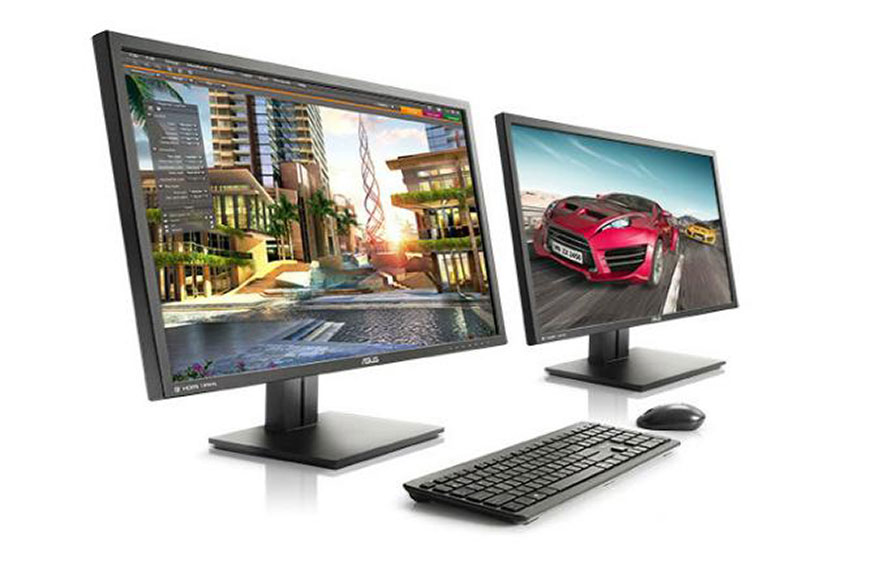
Adobe Creative Cloud updates. Smart Bins are finally here!
A bunch of Adobe Creative Cloud 2014 mobile and desktop software applications have been updated.
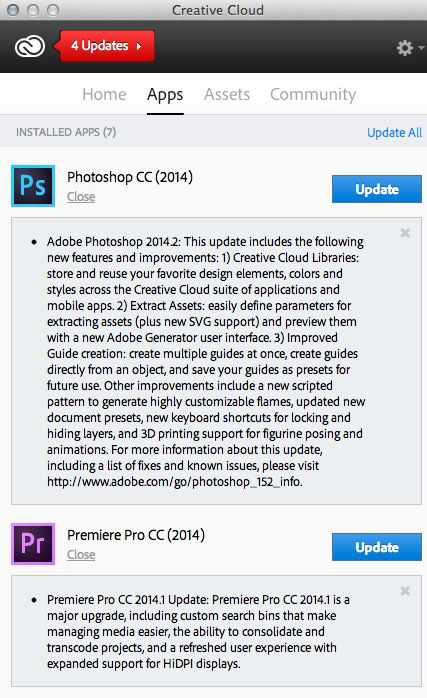
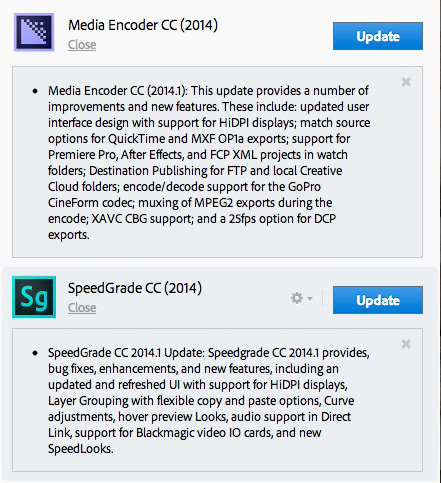
The most significant improvement (for us) come from Premiere Pro which now offers the following cool features:
- Open multiple projects without importing all the assets
- Cineform, Phantom CINE, Canon RAW, AJA RAW, 4/5/6K+ native support
- GPU boost for unleashing of more codecs in real-time playback
- Multiple colors for markers in timeline and source monitor. Movable markers
- Feathered masks in Program monitor with on screen GUI for all effects
- Larger text size in the Project Panel. Regular, Med, Large and Largest
And my favorite one:
- Create Search Bins with metadata to better organize assets, which is essentially the same concept as Smart Galleries in Adobe Lightroom.
There’s also a brand new Adobe Premiere Clip app that “easily transforms the video shot on iPhone or iPad into edited videos that are simple to share. Aspiring videographers can then send their compositions to Adobe Premiere Pro CC for advanced editing and finishing.” Sadly, Adobe keeps forgetting that the vast majority of the mobile world (85% to be exact) runs on Android OS. So far no developments for this platform have been announced.
Here some additional info on the latest Adobe Creative Cloud features: http://adobe.ly/1vJAXkQ
